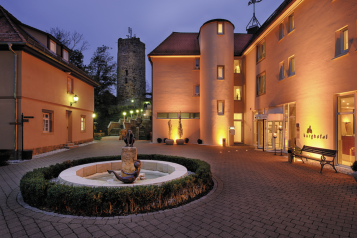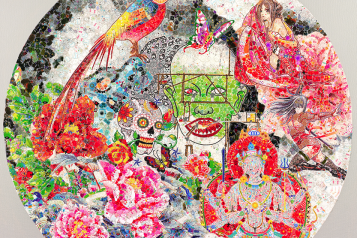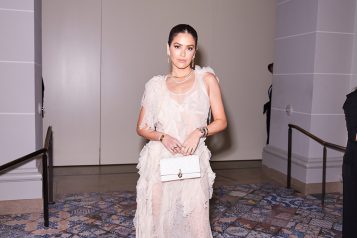
Wilbur Ross has just landed in Palm Beach, back from his weekly commute to his office in New York. Even though he’s a New York investment titan with $10 billion under his control, he’s also a tennis-playing Florida resident who manages to play twice a day, three days a week. For Ross, his airy waterfront Palm Beach villa is really home. “I find Palm Beach the most relaxing community I’ve ever lived in,” he says. “You can be as social as you want or as reclusive as you want, and everyone comes from somewhere else and I think that makes it a very welcoming community.”
Ross and his wife Hilary Geary Ross have other homes in both Manhattan and Southampton. “You see the same crowd [in] Southampton [as New York, which is] basically Wall Street East.” Ross would know—he and Hilary have a habit of showing up at all the best events, parties and restaurants.
Despite the lavish parties and billion of dollars both in his account and under his control, Ross is the exact opposite of the stereotypical Wall Street businessman. He is soft-spoken, polite, grounded—and patient, likely the same attributes that helped him go from hardworking “Yale College and Harvard Business School student” to “tycoon.”

It was in the 1970s that Ross built his nationwide reputation as a bankruptcy advisor, even working to clean up Michael Milken’s junk-bond mess in the 1980s. But it wasn’t until 2000, when he raised $440 million to buy out his own equity fund and created WL Ross and Co., that life started to get financially very interesting for Ross.
In 2005, he sold International Steel Group to Mittal Steel Company for $4.5 billion after he had acquired it and turned it around—effectively saving the mid-western steel industry. Despite the success, those in Ross’ line of work are often maligned and mistaken for corporate raiders. “We’ve never liquidated anything,” says Ross adamantly. “Our idea is to breathe new life back into companies and make them more valuable than they were before.”
 The 2008 banking crisis held yet more opportunities for Ross, who bought Miami Lakes-based BankUnited in 2009 at an FDIC auction. “At that point in time, people thought Miami was going to slip off into the ocean like the lost continent of Atlantis. We didn’t agree with that.” So Ross brought in the right people and within 18 months, offered BankUnited on the NYSE, one of the largest bank offerings in the country’s history.
The 2008 banking crisis held yet more opportunities for Ross, who bought Miami Lakes-based BankUnited in 2009 at an FDIC auction. “At that point in time, people thought Miami was going to slip off into the ocean like the lost continent of Atlantis. We didn’t agree with that.” So Ross brought in the right people and within 18 months, offered BankUnited on the NYSE, one of the largest bank offerings in the country’s history.
“We saved the FDIC a lot of money, preserved jobs, and made a good profit for ourselves. That’s a very happy trifecta,” he says with a smile. That success led to a rash of other bank deals including Sunbank, Talmer, Cascade, and more. It also led to a phone call from fellow billionaire Richard Branson who wanted Ross’ help buying Northern Rock bank from the United Kingdom’s government, which has been rechristened with a sexier, Branson-style name: “Virgin Money.”
“The U.S. banking system was pretty well cleaned up; European banks needed help and we knew a bit about banks,” says Ross, who went on to help Bank of Ireland and acquire Eurobank in Greece and Bank of Cyprus.
One market he’s not ready to buy into yet is the Italian market. “I think it’s still too early,” he explains. “They haven’t really started the kinds of societal reforms needed, and Italy is a very complex place,” he says, citing the vast divide between the country’s north and south. But he’s still hopeful. “I had lunch with the prime minister [Matteo Renzi] and I was very impressed with him. He’s only 40 years of age and has a real vision for the country,” he says.
Even before Ross got started on banks, he acquired Cone Denim Mill, a floundering American mill in Greensboro, North Carolina that had been in operation since 1891. Instead of letting Cone close, Ross had a 21st century solution—open Cone Denim mills in Jiaxing, China and in the Mexican cities of Parras and Yecapixtla.
“It’s a very high-quality mill,” explains Ross, who is excited by the resurgence in popularity of American-made products. “It’s a good thing—it’s healthy. After all, if American consumers don’t buy American goods, then the economy will wind down; people won’t have jobs. It’s all very interactive.”

Ross’ business trips to Hong Kong and China for Cone and other business ventures brought him face to face with contemporary Chinese art, which he and his wife have become avid collectors of. Chinese and Vietnamese art now play prominently in their famous collection—with over 200 pieces, which include works by artists Liu Guosong, Liu Bolin, and Li Chen.
“Many of the Americans have had a big influence on them, particularly Andy Warhol. Their fresh take on Warhol’s principles is evident in Zhang Hongtu’s Six-pack of Kekou-Kele from 2002: the piece is a set of six Coca-Cola bottle-shaped porcelain sculptures in Ming-era blue and white. The conceptual set sits on the Ross’ dining room sideboard, looking totally at-home amongst Palm Beach décor by famed designer Mario Buatta. “The caps actually say Coca-Cola in Chinese,” says the billionaire with a laugh.
“Contemporary art can really give a room a ‘snap, crackle, and pop!’ It really ignites traditional décor,” says Hilary, who is his partner in crime when it comes to collecting.
But the contemporary Asian art is just the tip of the iceberg. The Rosses have become well-known collectors, constantly making the rounds at Sotheby’s and Christie’s auctions in both New York and London. “It’s fun because it gives traveling a whole other purpose; it adds a wonderful dimension to traveling,” says Hilary.
They are recognized in the art world for their $100 million collection of mid-century surrealist Belgian artist René Magritte. “I think everybody likes surrealism; it’s fun. But I particularly like Magritte because he painted in a very deadpan style that is very flat and uses ordinary objects, but there is always something akimbo in them,” he explains.
Interestingly enough, their first Magritte acquisition wasn’t a tableau, but a tapestry. The couple purchased it to decorate a wall and were very happy with it—until they decided that if they were going to really do Magritte, it should be one of his iconic paintings. Twenty-five paintings later, they would still like more. “Unfortunately, the prices have gotten a little high, so it’s harder to do,” says Ross, who is likely the primary culprit for the increase—he often lends works by Magritte to institutions like the MoMA. “It’s good for spreading knowledge about the artist and I think it’s the appropriate thing to do. Plus, there are not that many Magritte’s floating around anymore between museums, a few European collectors, and me. [Lending them out] exposes them to a new generation.”
Hilary has her own work to expose too. It’s a weighty new coffee table book called Palm Beach People, the follow-up to her successful New York, New York.
The tome took Hilary three years to complete and will be released on November 11. It features former Beatles photographer Harry Benson’s vivid and dynamic photographs of Palm Beachers in their natural habitat. “It’s a great big yearbook of Palm Beach,” she says. “Watching Harry in action was my favorite part of the process,” says Hilary, who is donating the proceeds to the Palm Beach Preservation Foundation. “He could ask them to do anything and they’d say ‘yes!’
Hilary is the Social Editor for Quest Magazine and had been working for years with Benson there. She has been making the scene on the South Hampton-Palm Beach-Manhattan circuit since she was a teenager, but instead of adopting a “seen-it-all”, “met-them-all” attitude; she seems genuinely interested in meeting new people—even if the people in Ross’ pages aren’t exactly new.
Indeed, the names, if not the faces, are all familiar, with people like Brooke Shields, the Duke and Duchess of Marlborough, Georgina Bloomberg, Tommy Lee Jones, Mrs. Henry Ford, and many more showing up on the book’s oversized pages.
Ross’ access offers a rare glimpse of the rarified world of New York and Palm Beach’s most famous citizens, and that is what makes New York, New York, and now Palm Beach People so special. Benson’s new—as well as historic—anthology of photos fulfill the promise of subjects like Yoko Ono, Donald Trump, Andy Warhol, Tom Wolfe, Spike Lee, AL Pacino, Woody Allen and Michael Kors.
The most interesting thing is, despite the fact that Hilary is behind the scenes for the production of the book, she and her husband, Wilbur Ross, may just be bigger than all of them.





















